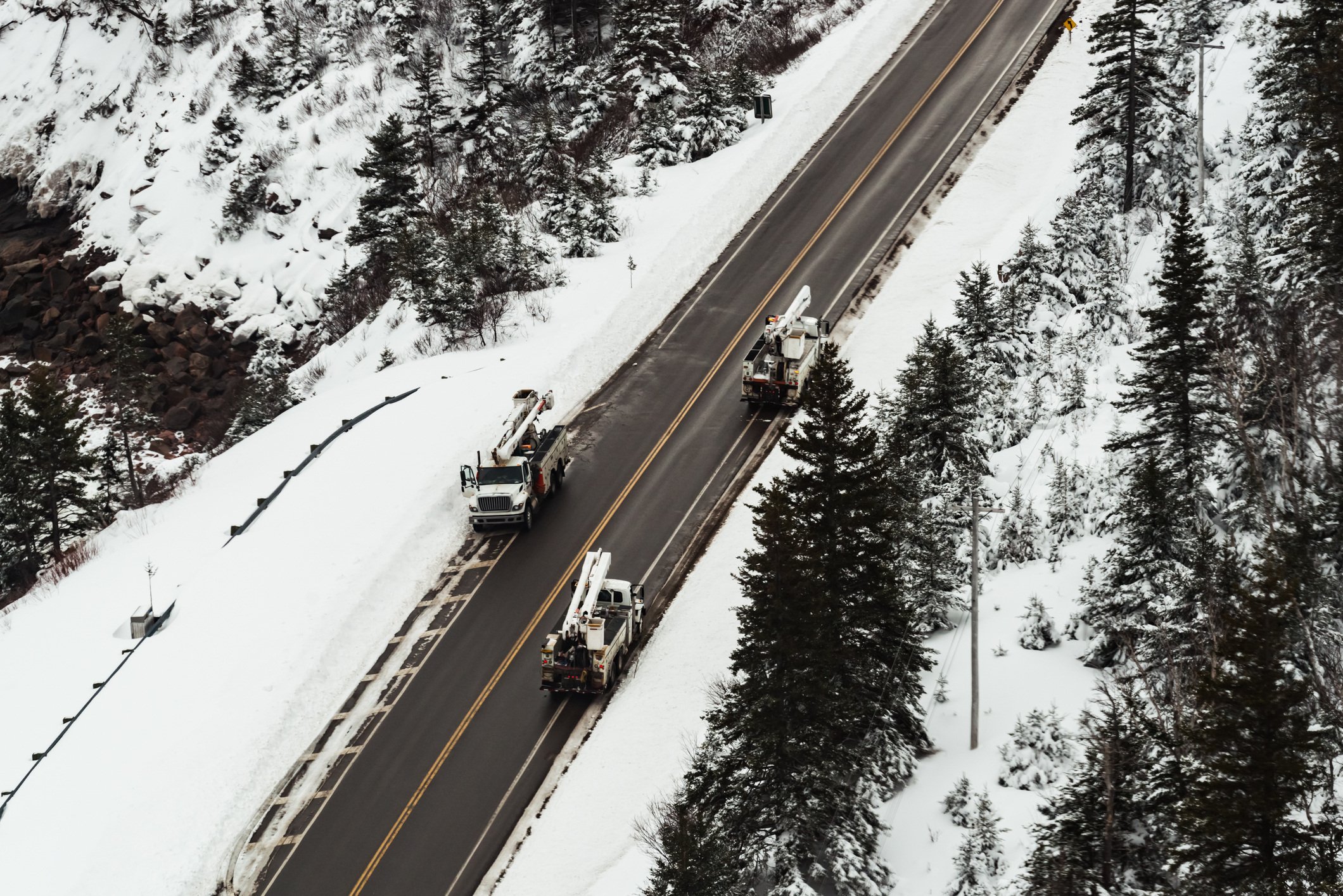5 Tips to Help Utility Fleets Proactively Prep for Winter

With hurricane season wrapping up at the end of the month, it’s time for managers of utility fleets to focus on another season that brings unique challenges — winter.
Blizzards, ice accumulation, snow, and freezing temperatures can disrupt and damage power, water, and gas systems, so effectively preparing your people, vehicles, and equipment for winter conditions is essential to minimizing service interruptions and ensuring the safety of your crews, customers, and community.
To help get your utility fleet winter-ready, here are five winterizing tips you’ll want to follow.
1. Inspect Vehicles and Equipment
Don’t wait for the arrival of freezing temps to begin your winterization efforts. Staying on top of routine maintenance is your first defense against harsh winter conditions. Essential best practices include:
- Clean Equipment: Cleaning equipment uncovers any signs of physical damage. Damage could be cosmetic and not affecting a moving component, or it could be more serious and require immediate repair. Either way, by cleaning equipment, you eliminate unwelcome surprises.
- Check Batteries: Cold weather strains batteries, so testing and replacing batteries that have a weak charge is crucial to preventing starting issues from occurring.
- Conduct Tire Maintenance and Assessment: Clean tires, inspect tread, and check tire pressure. Proper inflation is crucial every season, but especially in winter on icy or snowy roads. Additionally, consider switching to winter tires for enhanced traction and improved braking capabilities.
- Check Antifreeze and Fluids: Keep fluids, including antifreeze, at optimal levels to prevent freezing and keep engines running smoothly. Switch to low-viscosity oil, as it circulates more freely in cold temperatures, and also switch to a coolant with a reduced water ratio, so it doesn’t freeze your system.
- Wipers and Defrosters: Rain, snow, and ice can limit visibility on the road so be sure your windshield wipers are in good shape and the defroster is functioning properly. Winter-specific blades might be a wise investment if you’re in a region with significantly harsh winters. Winter blades are protected with specialized insulation, making them tougher than other blades and able to clear larger amounts of snow or ice buildup.
- Heating and Lighting Systems: Don’t assume your heating system will work. Test it before winter begins, so you have time to make any needed repairs. Check that all exterior and interior lights are operating, including strobe lights, which are essential in protecting your crews and the public from a collision with a stationary vehicle.
2. Stock Essential Supplies and Spare Parts
Weather-related delays are not uncommon in winter, so stock up on essentials before there is high demand. You never know when you might need them. Key items include:
- De-icer and Rock Salt: Ice is one of winter’s most dangerous hazards, so having de-icer and salt on hand can keep roads and sidewalks safely accessible for your crews.
- Tire Chains: In heavy snowfall, tire chains can provide extra traction for safer travel.
- Cold-Weather Gear: Keep extra warm clothing, gloves, hats, and blankets in your vehicles to protect crews from the elements if they’re stranded or delayed at a job site.
- Spare Parts and Supplies: Have extra wiper blades, wiper fluid, batteries, belts, hoses, and jumper cables on hand to avoid unnecessary downtime.
- First Aid Kits and Emergency Supplies: Equip each vehicle with a fully stocked first aid kit, flares, flashlight, batteries, cell phone charger, ice scraper and brush, food rations, and water.
3. Crew Training and Emergency Drills
Regular training and mock drills to ensure training is working are essential in preparing crews for winter emergencies. Training should cover basic winter driving skills, handling specialized equipment, performing repairs in icy or snowy conditions, and personal safety, including recognizing signs of hypothermia and frostbite.
4. Leverage Technology for Real-Time Monitoring
GPS and fleet management systems that track vehicle locations and monitor activity and road conditions are essential for winter operations. Dispatchers can deploy crews to areas with the highest priority and ensure they travel the safest routes. Additionally, fleet telematics can provide data on vehicle performance, alerting managers to potential maintenance issues before they escalate.
Real-time monitoring also enables crews to receive updates on road closures or hazardous conditions, helping them avoid risks and reach service locations quickly and safely.
5. Plan for Staffing and Shift Adjustments
Winter storms can mean extended work hours and additional shifts, so it’s essential to prepare for increased staffing needs. One method to accomplish this is developing contingency plans for staffing, including arrangements for overtime, standby crews, and backup teams. This ensures you have adequate coverage even during prolonged emergencies.
Considerations should also include transportation and lodging for crews far from their usual work locations. By preparing your crews for rotation and rest periods, you keep crew morale and productivity up and minimize fatigue-related accidents.
Want to better support your utility fleet?
Download our guide to learn how to address common challenges.